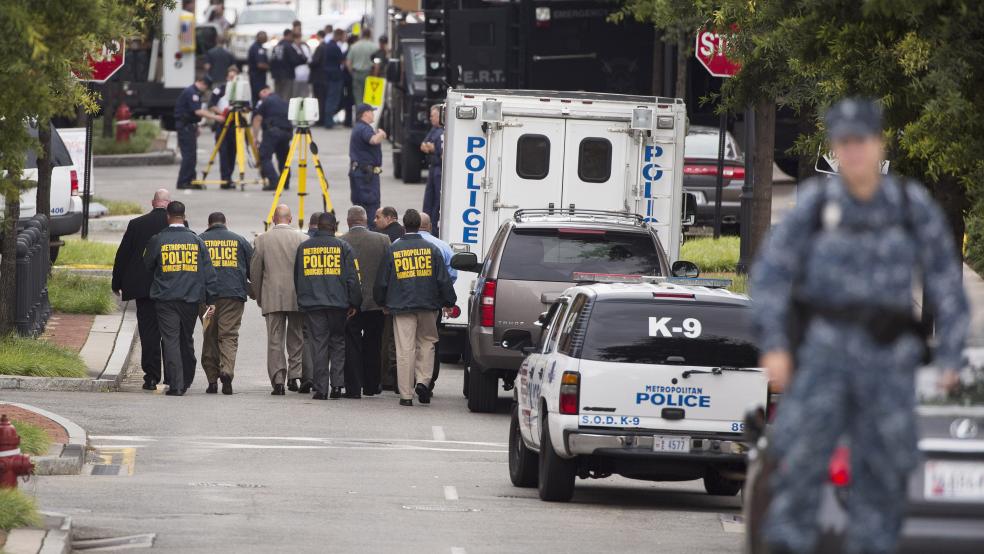A newly released government audit is raising questions over whether federal budget cuts may have jeopardized security at Washington's Navy Yard where a lone gunman went on a deadly shooting rampage Monday that left 12 people dead and 13 injured in the nation's capital.
The audit, which was made public after Rep. Mike Turner (R-OH) sent a letter to the Pentagon demanding that members of Congress be briefed, suggests budget cuts may have compromised safety. "Military installations may have increased their security risks in order to reduce costs."
The Navy Yard was among the bases included in the review.
The Defense Department's Inspector General has been reviewing military base security issues over the past year and found that "the Navy did not effectively mitigate access-control risks associated with contractor-installation access... As a result, at least 52 convicted felons received routine unauthorized installation access, placing military personnel at increased security risk."
That startling revelation could help explain how former Navy reservist and IT subcontractor Aaron Alexis, the alleged shooter – who had previously been arrested for gun offenses – was able to gain access to the Navy Yard on Monday.
In an interview with CNN Tuesday morning, Washington, D.C., Mayor Vincent Gray questioned whether across-the-board federal budget cuts, known as sequestration – had anything to do with lax security that led to the deadly attack.
"It really is hard to believe that someone with a record as checkered as this man could get credentials to be able to get on the base," Gray said. "As I look at, for example, sequestration, which is about saving money in the federal government ... have we somehow skimped on what would be available for projects like this and then put people at risk?"
Defense Secretary Chuck Hagel on Tuesday ordered a review of physical security and access at every U.S. military installation worldwide.
The Defense Department has been under increasing pressure to cut costs under sequestration, which took effect last March. Since then, Pentagon officials have been warning that budget cuts have hindered military readiness– and that they'll likely continue to do so if Congress fails to stop the second wave of sequester cuts this fall.
The Navy absorbed an $11 billion funding shortfall this year, which will grow by another $14 billion if Congress doesn't act by October 1.




